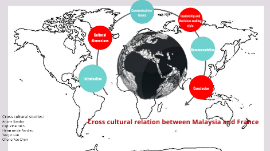Cross Cultural Presentation
Transcript: Background Issues and Adaptation in France Strategy Analysis Acquisition Action Framework Conclusion Angwin, D. (2001). Mergers and acquisitions across European borders: National perspectives on preacquisition due diligence and the use of professional advisors, Journal of World Business, 36(1): 32-57. Cartwright, S. & Cooper, C.L. (1996) Managing Mergers, Acquisitions and Strategic Alliances: Integrating People and Cultures, 2nd ed, Reed Elsevier: Oxford. Charles Hampden-Turner, F. T. (2007). Riding The Waves of Culture: Understanding Diversity in Global Business. London: McGraw-Hill; 2 edition. Fiedler, F.E. (1967). A Theory of Leadership Effectiveness, New York, N Y: McGraw-Hill Gertsen, M., Soderberg, A.M. & Torp, J.E. (1998) Cultural Dimensions of International Mergers and Acquisitions, Walter de Gruyter: Berlin. Lajoux, A.R. (1998). The Art of Acquisition Integration: A Guide to Merging Resources, Processes, and Responsibilities, McGraw-Hill: New York. Larsson, R. & Risberg, A. (1998). Cultural awareness and national versus corporate barriers to acculturation, in Gertsen, Martine Cardel, Soderberg, Anne-Marie & Torp, Jens Erik, editors (eds.) Cultural Dimensions of International Mergers and Acquisitions: Berlin. Lubatkin, M., Calori, R., Very, P. & Veiga, J.F. (1998). Managing mergers across borders: A two-nation exploration of a national administrative heritage, Organization Science, 9(6): 670-84. Meschi, P.-X. and Roger, A. (1994) ‘Cultural context and social effectiveness in international joint-ventures’, Management International Review, 34(3):197-215 Rottig, D. (2007). Successfully Managing International Mergers and Acquisitions: A Descriptive Framework, International Business: Research Teaching and Practice 2007 1(1): 97-118. Very, P. & Schweiger, D.M. (2001). The acquisition process as a learning process: Evidence from a study of critical problems and solutions in domestic and cross-border deals, Journal of World Business, 36(1): 11-31. Wall, S.J. (2001). Making mergers work, Financial Executive, March-April: 34-35, 67. Weber, Y. (1996). Corporate cultural fit and performance in mergers and acquisitions, Human Relations, 49(9): 1181-202. Local Brand Identity Conclusion Independent local brands Jean Pierre Coubert Communication Greet-Hostede's Dimensions intergrated in CASE Greet-Hostede's Dimensions intergrated in CASE French Born Executive and General Manager of Group du Nord Executive for Inter HRC Executive and general Manager of Vechtel France Expertise in Frech breweries Industry Local Culture Adaptation Rebranding 5. Long Term Orientation vs. Short term Orientation Local Cultural Problems Vechtel Company Cross Cultural Leadership Problems 2. Situational favorableness Stereotyping Problems Cultural Transition Action Framework Dutch Born Executive and General Management of Vechtel France in the beggining Broad Memeber of Vechtel Culture Man Poliglot References France Cross Cultural Communication Problems Outline Relationship prevails over tasks Issues with Spain and Adaptation in France Leadership Problems National Cultures Organizational Cultures Jaap Hermelen Schaeffer Takeover Company Cultural Problems Assertiveness Greet-Hostede's Dimensions intergrated in CASE THANK YOU 1. Power Distance Index (PDI) Greet Hofstede's Dimension Accessible Managers Acquisition Culture Clash 4. Individualism vs Collectivism 3. Masculinity vs. Femininity Emotional Gap Spain Cross Cultural Management Rotterdamn Communication Gap 2. Uncertainty Avoidance Index CONTIGENCY THEORY Organizational Culture Adaptation International Acquisitions 1. Leadership Styles Organizational Gap Analysis of Five C's Framework Competitiveness Domestic Acquisitions Yaw ADOO Liu BOYA Paula LÓPEZ Shree NEVE Feng ZIPING Cross Cultural Communication Problems Anxiety

















